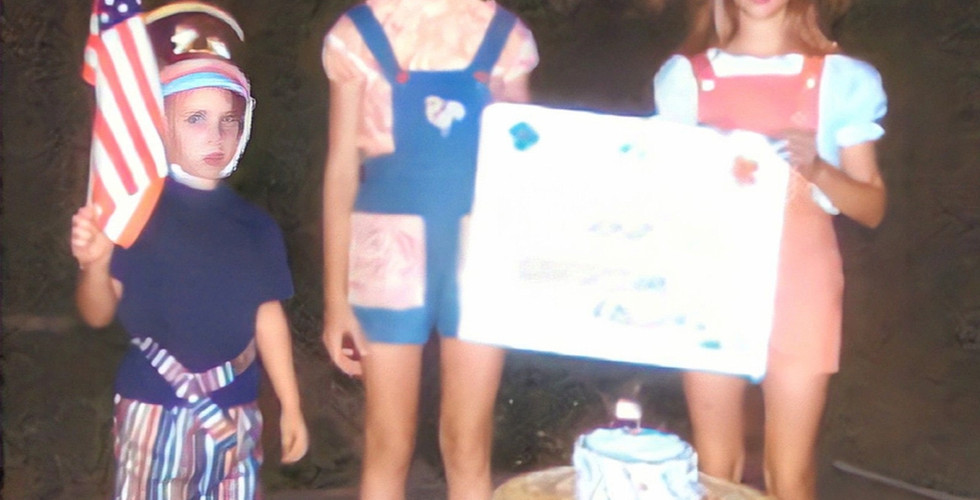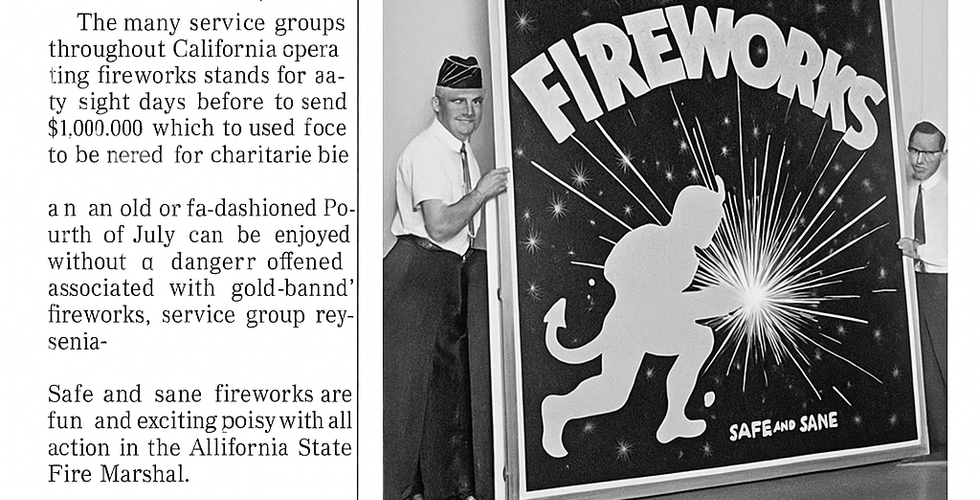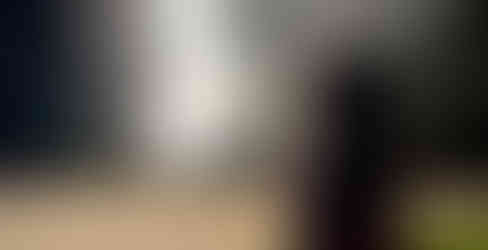Red Devil Days: Memories of Southern California’s Backyard Fun and Community Light Shows
- Lisa Hallett Taylor
- Jun 30, 2025
- 7 min read
Updated: Jul 7, 2025
What happened to simple Fourth of Julys when neighborhood barbecues and Piccolo Petes ruled?
No Fourth of July has ever rivaled the ones experienced during my childhood, growing up in the San Gabriel Valley, 22 miles east of downtown Los Angeles. Not even the July 4 in my 20s, when I gathered with friends to watch a spectacular fireworks display over the East River in New York City, or the one in DC with relatives when the restored Washington Monument reopened in 2000.
Each year, as the June gloom lifted, July 4 unofficially kicked off Southland summer weather. Public schools wouldn't reopen until mid-September, which meant over two months of unstructured fun awaited. Those Fourths were blissfully casual and not the type of traditional holiday when grandparents, aunts, uncles, and assorted cousins would gather. This made it more enjoyable for me, a first-generation Californian, whose relatives all lived in faraway states. I always longed for a big, extended family that lived nearby, like my classmates and friends seemed to have.
Backyard Barbecues and Swimming in the Doughboy
On these Fourth of Julys, we'd get together for backyard barbecues with the family of my childhood best friend, Leslie, who lived two doors up the street, as well as her grandparents and aunt, who resided between our houses. Sometimes, their relatives from Nashville would visit for the summer, making it even more lively. One of their cousins, Neal Jr., was in The Jordinaires, Elvis Presley's backup band, although he was usually on tour. Paul (Neal Jr.'s uncle) and Jessie, Leslie's grandparents, had a highly coveted Doughboy pool in their backyard. If they cleaned the pool of floating bugs and detritus, the kids would play Marco Polo and do underwater handstands before the men charred the chicken and hot dogs on the barbecue.
Planning for the Fourth
About a week before Independence Day, Leslie and I would write and direct an original patriotic theatrical production with costumes and an uncooperative cast of siblings and her cousins, whom we'd get peeved at for not taking us or our thespian masterpiece seriously. We'd also make red, white, and blue desserts that never resembled the recipes in the magazines.
Click photos to see full images.
A Red Devil Fireworks Cul-de-Sac Extravaganza
The real stars of the holiday, of course, were the spectacular fireworks. A week or so before the big day, stands built of thin wood and chicken wire popped up near street corners and in shopping center parking lots around town. Red Devil, Black Panther (later renamed Wildcat), and Freedom were the most popular brands, and the stands were positioned across the street from each other. Civic, church, and sports groups and teams sponsored fireworks stands as fundraisers, making it even more justifiable to spring for the more expensive box. Our family was always on a budget, so we'd get a practical box, while Leslie's family and her grandparents would splurge on the big boxes. They also got hefty, flocked Christmas trees that made our slim Douglas firs look like Charlie Brown's tree.
At dusk, we'd set up aluminum lawn chairs by the curb, fill plastic buckets with water, stretch a garden hose across the lawn "out of an abundance of caution," and get down to business. Leslie's father, Lee, was a high school drama teacher and assumed the role of ringmaster.
"And now, ladies and germs, boys and girls, direct your eyes center stage for the electrifying, dazzling Golden Cone followed by Howling Madness," he'd say in his emcee voice. The men would take turns keeping the pyrotechnics moving, with shrills and blasts and showers of colors. It was magic! Invariably, the women would shout at their spouses to be careful or they'd "blow off their hands."
And the fireworks, waiting for us in those big (or medium, in our case) cardboard boxes that we secretly handled days before the event. The glitter and jumbo snakes would smoke in sad little puffs, die out quickly, emit a rotten-egg odor (sulfur), and leave black-ash stains on driveways. The more robust fountain fireworks had intriguing names: Jewel, Silver, and Chrysanthemum. Who can forget the Sky Flyer, Screamer, California Candle, Star-Spangled Salute, Giant Triangle Wheel, Saturn Missile, Calliope Vesuvius, and Whistle Stop? The old stand-bys, Smokey Joe (a hobo who lit himself on fire with his cigar) and the 5-inch-high Cabin on Fire (paper) that--you guessed it--caught on fire. And the unforgettable Piccolo Petes, which screeched and abruptly stopped in about 30 seconds, with everyone imitating them. There were sparklers for the kids and men, which would again rattle the women's nerves, provoking frantic warnings. "Don't burn your sister's hair!" or "You'll poke an eye out" (more like singe some eyelashes). Miraculously, our hair and eyes remained on our heads and in our sockets.
'Safe and Sane' Wasn't Just an Advertising Slogan
Back then, you'd always hear "safe and sane" mentioned alongside any legitimate brand of fireworks. It wasn't just a clever ad message. California's "safe and sane" fireworks law originated from the broader California Fireworks Law, which was enacted in 1938 and designated by the Office of the State Fire Marshal as the sole authority responsible for classifying fireworks in the state. The city of Los Angeles ruled fireworks illegal in 1942.
From Sizzle to Fizzle for Boxed Fireworks
For valid reasons, many cities started to ban the sale and use of fireworks. In the mid-1970s, the region was afflicted by an intense drought, and reports increased of fireworks-related accidents and wildfires, usually caused by fireworks or sparks igniting wood-shingle roofs or dry brush. Each year, Regional politicians and safety advocates pushed to defuse the sale of fireworks.
On the other hand, the civic organizations such as the Kiwanis Club, Demolay, Little League, and churches that operated fireworks stands, relied on the profits from fundraising as their primary source of income for the year. Organization representatives often attributed the increasingly negative reputation of backyard fireworks to illegal firecrackers, such as Roman candles and cherry bombs, which propel upwards and explode in the air, and are more likely to ignite buildings and vegetation. Fireworks sold at stands were "guaranteed safe and sane", were "state approved," and were believed to be OK to use if supervised by responsible adults.
A South Gate pastor interviewed in the Los Angeles Times reasoned, "The Bible says the riches of the wicked are for the righteous."
Organized Shows and Arena Fireworks
In July 1979, the Los Angeles Times reported that more than 400 community fireworks displays were held in the region, highlighting the crowd-pleasing alternative to the neighborhood Red Devil-box gatherings that became popular in the 1960s and 1970s. The large extravaganzas included family-friendly fireworks at Pasadena's Rose Bowl, a massive display near Long Beach's Queen Mary, a concert, dance, and fireworks show at the Hollywood Bowl, and a display at Catalina Island's Avalon Harbor.
Wild Times in the South Bay
Sometimes, even the community fireworks shows got out of hand. A month after an unruly Independence Day event near Redondo Beach's King Harbor in 1979, which was described in The Daily Breeze as a "virtual war zone," the City Council drafted an ordinance prohibiting the use and sale of fireworks in the beach area. In the August 28, 1979, issue of The Daily Breeze, Redondo Beach Mayor David Hayward said, "We are getting an element into the city that is not desirable to the city or to myself."
The city's urgency to cancel might have been further fueled by a concert riot at Polliwog Park in neighboring Manhattan Beach that occurred a couple of weeks later. Through an epic mix-up, a concert band was replaced by the local hardcore punk band Black Flag, who described themselves to the Parks and Recreation summer concerts series scheduler as a light jazz group that played Fleetwood Mac covers. The crowd pelted the stage with bottles, cans, fresh produce, and even fried chicken. A photo shows singer Keith Morris leaning into his mic, surrounded by smashed cans and picnic food, while two future band members wrestle on stage.
The following Fourth of July, in 1980, hundreds showed up at Redondo's King Harbor with blankets and picnic baskets for the annual fireworks show, unaware that it had been canceled—remember, the primary sources of news were television, newspapers, or landlines. The crowd disbursed after police announced the fireworks ban via mobile loudspeakers.
Throughout the 1980s, chambers of commerce, parks and recreation departments, and fire officials compiled lists for news organizations. They promoted regional fireworks displays at schools, municipal stadiums, parks, and other locations where fireworks and crowds could be contained and controlled.
All Good Things Must Come to an End
I don't recall our last Fourth of July with Leslie and her family, although a few photos show us "kids" awkwardly posed together, older and starting to go our own ways. Gone were the matching outfits, the patriotic plays, and melted blue-icing cakes. We probably still twirled a few sparklers and listened to Leslie's grandmother, Jessie, as she reminded us in her slow Tennessee drawl, how swallowing a watermelon seed would cause a plant to grow in your stomach or that eating watermelon before bed gave you nightmares (it contains choline and lycopene, which help with sleep disturbances).
My parents moved after I graduated from high school. Other than the fun Fourth of July I celebrated in Manhattan and one spent near Cal Poly San Luis Obispo, no Independence Days stand out in my memories of my late teens and 20s. By the time I had children in the 1990s, fireworks stands had been replaced by city concerts featuring cover bands and half-hour fireworks shows in local parks, timed to patriotic soundtracks. A couple of years ago, our city replaced the fireworks with a drone show.
A 2024 National Geographic article, entitled "Fireworks are out, drones are in? Why a July 4th tradition is slowly evolving," explored the environmental impact of fireworks, as well as their effects on the mental and physical health of people and pets. It raises the question: Is drone technology becoming the new preferred way to celebrate?
I'm grateful for those uncomplicated Independence Days of my childhood. They proved that the best gatherings are spent in the company of good friends and close family, savoring the moment and creating traditions along the way.






















Comments